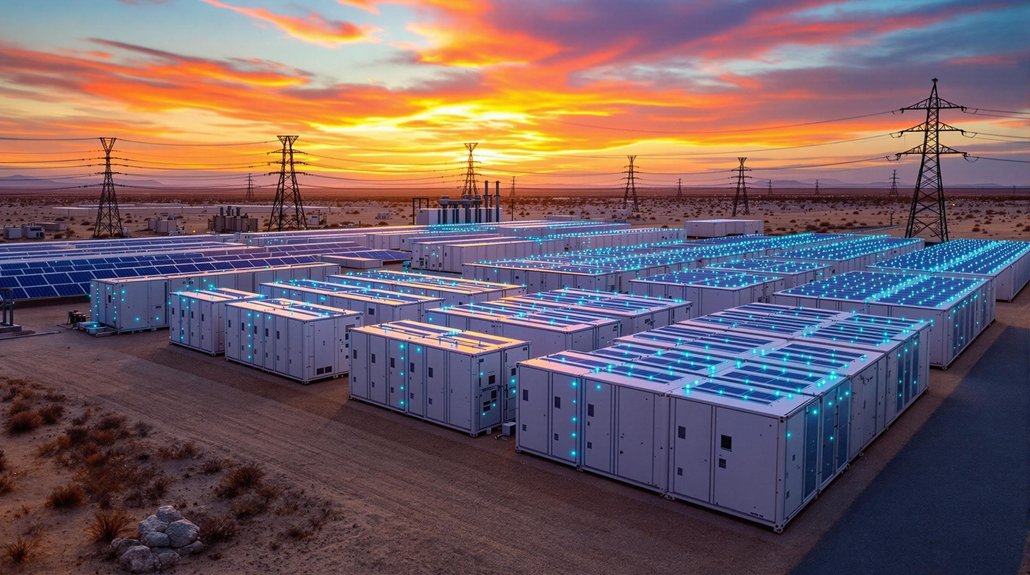A wind turbine diagram reveals the engineering marvel inside those giant white towers. The key components include massive 80-meter blades, a 72-ton nacelle housing the generator and gearbox, and a steel tower reaching heights of 120 meters. Modern turbines have come a long way since their humble 1980s beginnings. From fire suppression to aircraft visibility systems, these complex machines pack serious technology into their deceptively simple exterior. There’s more to these giants than meets the eye.

A wind turbine is fundamentally a giant mechanical beast, towering up to 120 meters into the sky. Its massive blades, stretching up to 80 meters in length, spin relentlessly to capture nature’s free energy. Modern turbines are incredibly more powerful than their ancestors – the early 1980s versions with 33-foot blades generated just 45 MWh annually. The whole setup looks deceptively simple from the ground, but don’t be fooled – these machines are complex engineering marvels packed with enough technology to make your head spin.
Wind turbines may seem simple from afar, but these towering giants are technological marvels that harness nature’s power with engineering brilliance.
At the heart of it all sits the nacelle, perched atop the tower like a cramped mechanical penthouse. Inside this tight space, you’ll find the real action: a generator converting all that spinning motion into electricity, a gearbox working overtime to speed things up (unless it’s one of those fancy gearless models), and brake systems ready to shut the whole party down when needed. Most nacelles are quite hefty, with a standard 2MW turbine housing 72 tons of equipment. These efficient machines help create clean electricity without depleting natural resources.
And yes, there’s a yaw system that makes sure the turbine faces the wind – because nobody likes a turbine that can’t find the breeze.
The tower itself isn’t just a glorified pole. It’s a carefully engineered structure, typically made of tubular steel, housing an internal ladder or lift for maintenance crews. Think of it as a giant straw, but instead of drinks flowing up, it’s got power cables running down.
The whole thing sits on a massive concrete foundation that’s about as exciting as watching paint dry – until you realize it’s keeping tons of spinning machinery from toppling over.
The brains of the operation come from various control systems. Anemometers and wind vanes work like weathervanes on steroids, while SCADA systems monitor everything remotely.
The electrical components handle the dirty work of making the power grid-friendly, with transformers and switchgear doing their thing. Safety features are everywhere – because nobody wants a lightning-struck turbine or one that’s invisible to aircraft.
There’s even fire suppression systems in some models, because apparently, giant spinning machines occasionally need a timeout. It’s all quite impressive, really – when it works.








